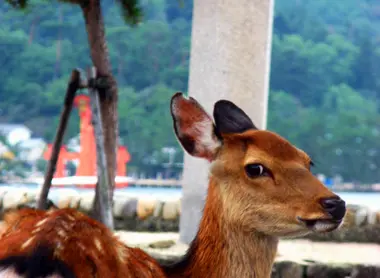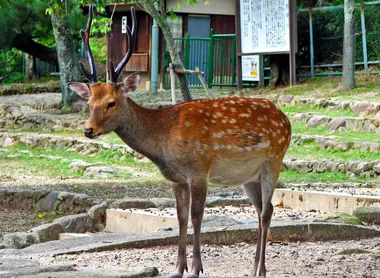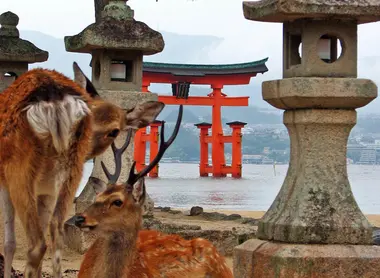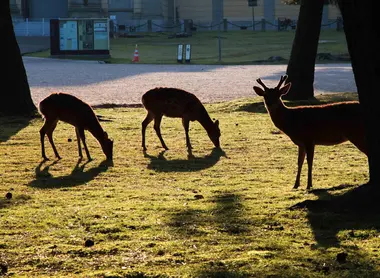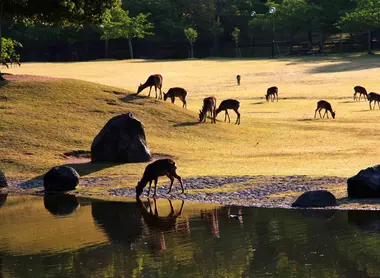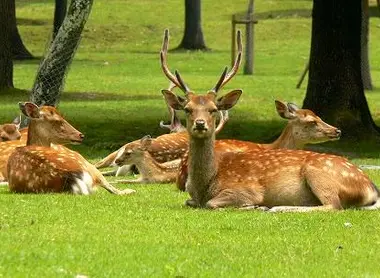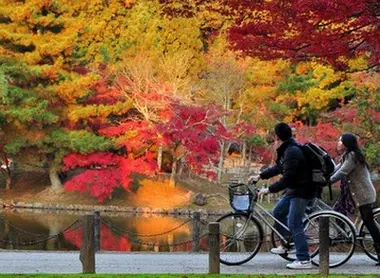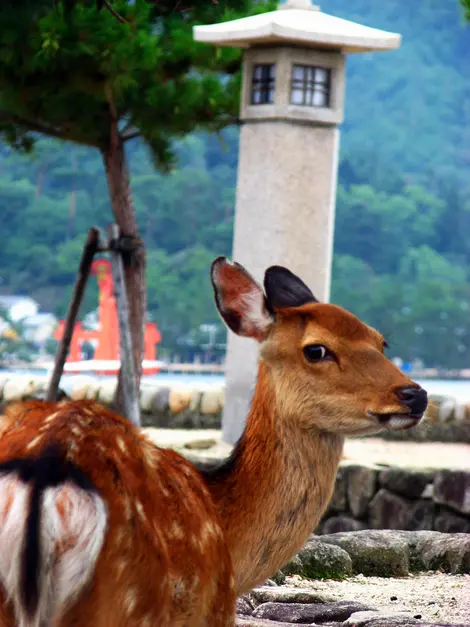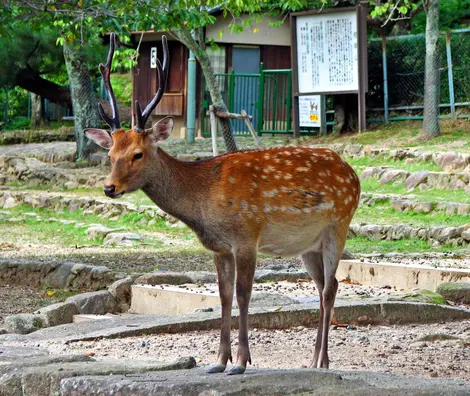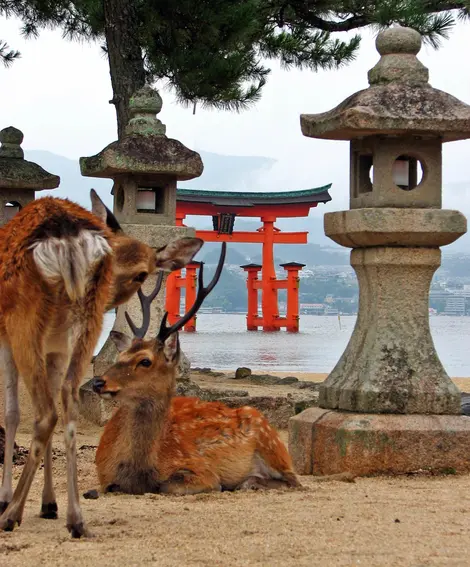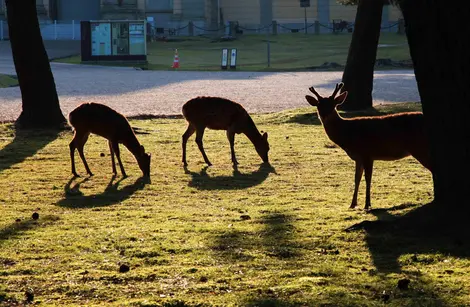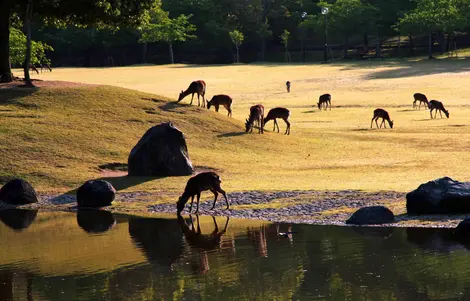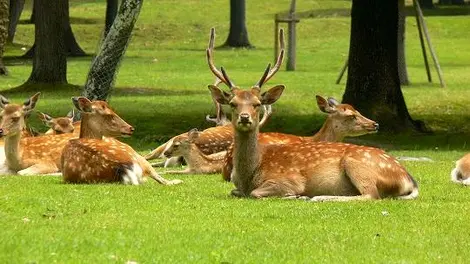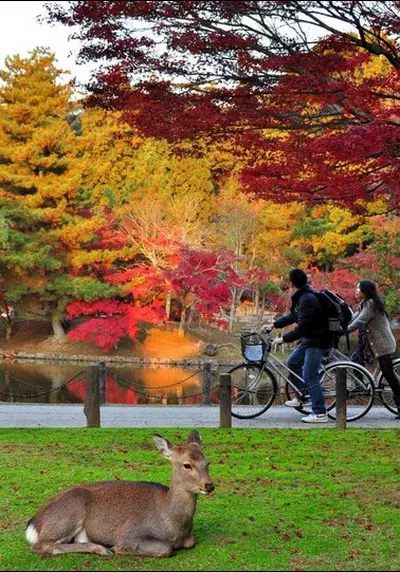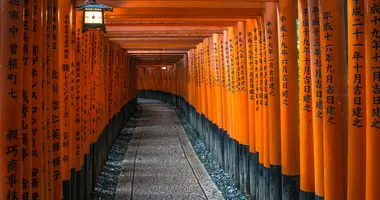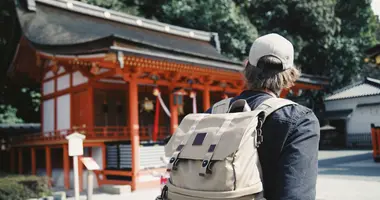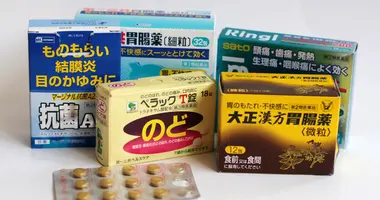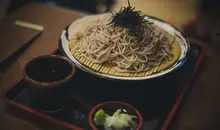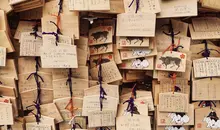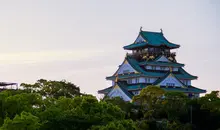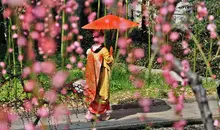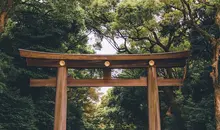5 places to see fallow deer in Japan
- Published on : 17/03/2024
- by : J.L.
- Youtube
Japan offers many opportunities to observe fallow deer, considered divine messengers in the Shinto religion. These sacred animals can be found at many of the country's most emblematic sites, where they cohabit with visitors. Discover the five best places to admire these fascinating creatures, as well as information on their history, behavior and the precautions to take when meeting them. From ancient shrines to picturesque islands, these unique places will give you an unforgettable experience at the heart of Japanese culture.
Kashima-jingû Shrine: cradle of the sacred deer tradition
Kashima-jingû Shrine, located in Ibaraki Prefecture, is considered the cradle of the sacred deer tradition in Japan. Although its exact founding date is unknown, the shrine is mentioned in historical documents dating from before the 8th century. According to Japanese mythology, the great goddess Amaterasu sent a messenger in the form of a deer to Takemikazuchi, the kami of this region.
Today, some twenty fallow deer live in the temple grounds, perpetuating this age-old tradition. Visitors can feed these sacred animals by buying carrots on site. The Kashima-jingû shrine is easily accessible from Tokyo, with a train journey of around 2h30.
Nara Park: Japan's most famous deer-watching site
Nara Park is undoubtedly Japan's best-known deer-watching site. Located in the former imperial capital, this vast park is home to some 1,300 fallow deer, which live freely among visitors. The history of these deer dates back to the Nara era (710-794), when the Takemikazuchi kami is said to have arrived on the back of a white deer to visit the newly founded Kasuga-taisha shrine.
Today, Nara's fallow deer are considered national treasures and are very friendly to visitors. Special fallow deer cakes, called "shika senbei", are sold in the park. Every year in October, a traditional buck antler-cutting ceremony is held to avoid incidents during the rutting season.
Mishima-taisha temple: an intimate encounter with Shizuoka fallow deer
The Mishima-taisha temple, located in Shizuoka prefecture, offers a more intimate experience with fallow deer. This Shinto shrine, associated with Minamoto no Yoritomo, protects the entire Izu peninsula. In 1919, fallow deer from the Kasuga-taisha were donated to the Mishima-taisha, establishing a new population of sacred fallow deer.
Today, a dozen fallow deer are protected in an enclosure within the sanctuary. Visitors can observe these animals up close and admire the 1,200-year-old fragrant olive tree, a sacred tree emblematic of the temple. The Mishima-taisha is within easy reach of the Mishima shinkansen station, just a 7-minute walk away.
Mount Kinka: a sacred deer island in the Tôhoku region
Mount Kinka, located on a small sacred island in Miyagi prefecture, is one of Tôhoku's three major pilgrimage sites. Despite the damage suffered in the March 2011 disaster, the site is part of the Sanriku reconstruction project and continues to attract many visitors.
Currently, around 450 fallow deer roam freely on the island, regarded as messengers of the kami. As in Nara, an annual antler-cutting ceremony takes place in October. The island offers an exceptional natural setting for observing these sacred animals, with a breathtaking view of the Pacific Ocean.
Miyajima Island: 500 free-roaming fallow deer in a picturesque setting
Miyajima Island, located in Hiroshima prefecture, is another emblematic site where you can observe fallow deer in the wild. Around 500 fallow deer inhabit this sacred island, whose history dates back over 6,000 years. Once confined to the mountains, the fallow deer have moved down to the coast with the development of tourism.
Unlike Nara, the feeding of Miyajima's fallow deer has been prohibited since 2008, to preserve their natural behavior and balanced diet. A project to return the fallow deer to their wild state in the mountains is currently under study. The island of Miyajima offers a unique picturesque setting for observing these animals, with its famous floating torii and historic temples.
Fallow deer behavior and precautions to take during your visit
Although fallow deer are generally docile and accustomed to human presence, it's important to observe certain rules to ensure your safety and the animals' well-being. Here are a few precautions to take:
- Avoid feeding fallow deer unauthorized food, as this can cause health problems.
- Don't leave garbage lying around, especially plastic packaging that the fallow deer could ingest.
- Be particularly vigilant during the rutting season (September to November) and the birthing season (May to July), as fallow deer can be more aggressive.
- Keep your distance and don't try to provoke or frighten them.
- Keep an eye on your belongings, as fallow deer are curious and may rummage through bags in search of food.
The cultural and religious importance of fallow deer in Japan
Fallow deer occupy a special place in Japanese culture and religion. Considered divine messengers in Shintoism, they have been revered for centuries. This tradition dates back to the time when Nara was the capital of Japan, and fallow deer were protected by law on pain of death.
Today, although their divine status has evolved, fallow deer remain important symbols of Japan's cultural heritage. They are designated as national natural treasures in places like Nara. Their presence in shrines and parks is a reminder of the deep connection between nature and spirituality in Japanese culture.
However, this coexistence between fallow deer and humans also poses challenges. In some rural areas, fallow deer are considered pests that damage crops. This duality between sacred and pest animal reflects the contradictions and challenges of modern Japanese society in its relationship with nature.
